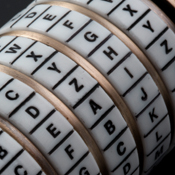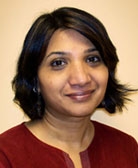History's Lessons Fuel Information Security Careers
National Cryptologic Museum Offers Glimpse at Past, Hope for Future Prospects
At the museum, visitors can catch a glimpse of some of the most dramatic moments in the history of American cryptology: the people who devoted their lives to cryptology and national defense, the machines and devices they developed, the techniques they used, and the places where they worked. For the visitor, some events in American and world history will take on a new meaning. For the cryptology professional - or aspiring professional -- it is an opportunity to absorb the profession's heritage.
Hall of Fame
The artifacts and exhibits in the museum illustrate the history of cryptology and show the march of technology and how it was pushed, in many ways, by NSA's communications security (COMSEC) developments. Artifacts include early 20th-century prototypes of COMSEC devices, never-before-exhibited equipment from the World War II era through 1990, and equipment still in use today or just ready to be fielded. Visitors to the gallery can hear the evolution of secure voice telephone communications with SIGSALY and see first-hand the use of biometrics and how measurements of fingerprints are made and used to verify identity.
Among noted exhibits:
- Enigma - Possibly the most well known of all cipher machines is the German Enigma. It became the workhorse of the German military services, used to encrypt tens of thousands of tactical messages throughout World War II. The number of mathematical permutations for every keystroke is astronomical. However, the Enigma is not famous for its outstanding security, but rather for its insecurities. Allied forces were able to read most of the Enigma encrypted messages throughout most of the war as a result of the tireless effort of many Allied cryptologists.
"The Enigma cipher machine had it all," says Patrick Weaden, Curator, National Cryptology Museum. "The challenge Enigma posed to its allies and how crypto professionals broke the code, this is truly a tribute to the crypto profession".
- 'Big' Machines - The Germans referred to the U.S. machine, SIGABA, as the 'Big' machine, hence the name of this exhibit. The collection of 'Big' machines in the exhibit encompasses several different, high-level, encryption machines used during World War II by the U.S. and its adversaries. 'Big' machines of this era were generally suited for fixed-station or ship-borne secure communications.
- SIGSALY - SIGSALY was the first secure voice encryption system for telephones. It was invented and built by Bell Telephone Laboratories in 1943. It had several technological "firsts" including pulse code modulation for speech transmission, multilevel frequency shift keying, and bandwidth compression.
- The Battle of Midway - This was a major naval battle, widely regarded as the most important of the Pacific Campaign of World War II. It took place from June 4-7,1942. The United States Navy decisively defeated an Imperial Japanese Navy attack against Midway Atoll, inflicting irreparable damage on the Japanese carrier force and seizing the strategic initiative. American codebreakers were able to determine the date and location of the attack, enabling the forewarned U.S. Navy to set up an ambush of its own. Four Japanese aircraft carriers and a heavy cruiser were sunk in exchange for one American aircraft carrier and a destroyer. This is another great example of the crypto heritage.
Museum Library
The National Cryptologic Museum has an adjunct reference library, which not only supports the exhibits, but also encourages visitors to research various areas of cryptologic history. Over the years, the library has become an important resource to students, scholars, and those with an interest in this once secret world.
The Museum Library maintains a collection of unclassified and declassified books and documents relating to every aspect of cryptology. The books and records complement the museum exhibits and artifacts, but also offer unique and in-depth sources of information for researchers.
What it Means to Information Security Professionals
The Museum is an invaluable educational tool, benefiting thousands of students, security professionals and teachers every year. Tours are provided, allowing students of all ages the chance to learn about cryptology's impact on history and the possibility of exciting jobs in an area they may not have thought possible.
"Cryptology is essentially an important building block of Information Security, and professionals within the security discipline need to understand and learn the basics of cryptology to succeed in the future," says Rainer Steinwandt, associate director and co-editor of Journal of Mathematical Cryptology.
The Museum is also a valuable asset as a recruiting tool for prospective new employees. Examples of this are the Presidential Classroom and the National Youth Forum, which visit twice annually, receiving tours tailored to spark their interest in possible careers in the cryptologic profession. Several distinguished national and international visitors have toured the museum, and congressional staffers routinely visit the NCM for tours and unclassified background briefings while visiting NSA. These visitors often comment on how the information gained during their tour has given them a greater understanding of cryptology and its importance to our national security, Weaden says. "This trip is a must for crypto and security professionals to learn more about our nation's cryptologic heritage," Weaden says.





















